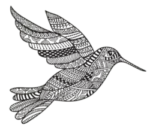(Or: When Tiny Birds Break All the Rules)
Just when scientists think they understand hummingbirds, these remarkable creatures reveal another layer of unexpected behaviors that challenge our assumptions about what small birds can do. From playing in water sprinklers to engaging in aerial dance battles, hummingbirds consistently demonstrate that they’re full of surprises.
The Playground Pioneers
Perhaps one of the most unexpected discoveries about hummingbirds is their capacity for play. Yes, these seemingly always-busy birds actually take time out for what appears to be pure enjoyment. Observers have documented hummingbirds repeatedly flying through water sprinklers when they’re not thirsty, diving through falling leaves in autumn, and even playing aerial games with floating soap bubbles.
These playful behaviors include:
- Dancing through water droplets repeatedly
- Catching and releasing small floating objects
- Engaging in aerial acrobatics with no apparent purpose
- Investigating moving shadows and reflections
The Sleep Innovators
While most birds find a perch and simply doze off, hummingbirds take sleep to an entirely different level. Their nightly torpor state represents one of the most extreme energy-saving adaptations in the animal kingdom. But what makes this truly unusual is how they position themselves – often hanging completely upside down, looking more like tiny bats than birds.
During torpor, these birds exhibit behaviors that seem almost impossible:
- Reducing heart rate from 1,200 to 50 beats per minute
- Dropping body temperature by up to 40 degrees Fahrenheit
- Maintaining perfect balance while unconscious
- Processing memories during deep sleep states
The Aerial Warriors
Despite their diminutive size and seemingly delicate nature, hummingbirds engage in some of the most aggressive territorial battles in the bird world. They’ve been observed chasing away hawks and other predatory birds many times their size, displaying a level of courage that seems to defy both logic and self-preservation instincts.
Their combat strategies include:
- High-speed chase maneuvers
- Strategic dive-bombing
- Precision bill fencing
- Coordinated group defense behaviors
The Memory Champions
While we expect complex memory capabilities from larger-brained animals, hummingbirds shatter our preconceptions about cognitive abilities in small creatures. They can remember every flower they’ve visited in their territory, track bloom times, remember migration routes spanning thousands of miles, and even recognize individual humans who feed them.
These cognitive achievements extend to:
- Calculating nectar replenishment timing
- Understanding geometric relationships
- Recognizing and remembering faces
- Learning from observed behaviors
The Weather Predictors
Long before modern meteorological equipment, hummingbirds developed the ability to detect incoming weather changes with remarkable accuracy. They can sense slight variations in barometric pressure, allowing them to prepare for storms hours before they arrive.
Their meteorological adaptations include:
- Pre-storm feeding frenzies
- Strategic shelter selection
- Group behavior modifications
- Resource hoarding before bad weather
The Social Strategists
Despite their reputation for aggressive territoriality, hummingbirds sometimes display surprising levels of social cooperation. They’ve been observed sharing feeding territories during times of abundance, establishing temporary alliances, and even engaging in coordinated defense against common threats.
Unexpected social behaviors include:
- Collaborative nectar source defense
- Information sharing about food sources
- Temporary feeding hierarchies
- Cooperative breeding strategies in some species
The Problem Solvers
Hummingbirds regularly demonstrate remarkable problem-solving abilities that seem impossible for their tiny brains. They can figure out how to access nectar from new flower shapes, learn to avoid obstacles, and even understand the concept of refilling schedules at feeders.
Their intelligence manifests in:
- Tool use understanding
- Sequential learning
- Pattern recognition
- Adaptive behavior modification
The Mimicry Masters
Some hummingbird species have developed the surprising ability to mimic the sounds of other birds and even some insects. This unexpected vocal talent serves various purposes, from territorial defense to mate attraction.
Their vocal abilities include:
- Copying other bird songs
- Mimicking insect buzzes
- Creating complex vocalizations
- Using sound for social communication
Conclusion: Nature’s Endless Surprises
The unusual behaviors of hummingbirds remind us that nature’s capacity for surprise is endless. These tiny birds continue to challenge our understanding of what’s possible in the animal kingdom, demonstrating that size doesn’t limit behavioral complexity or intelligence.
Remember: When observing hummingbirds, expect the unexpected. These remarkable creatures have a way of showing us that there’s always more to learn about their capabilities.


